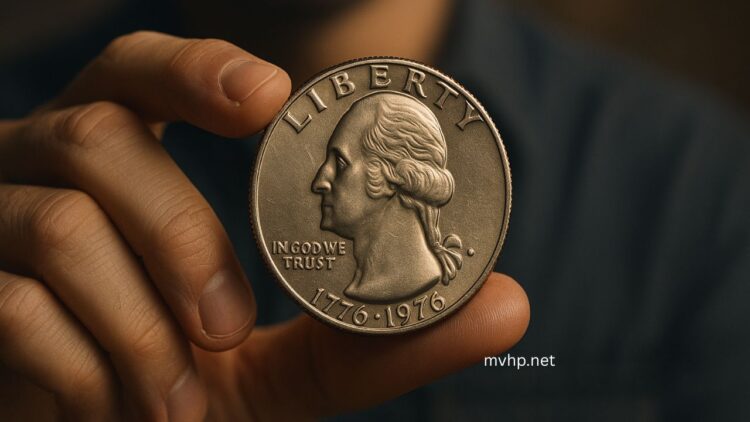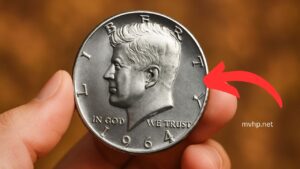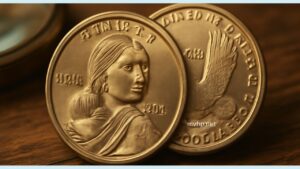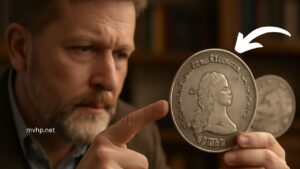In 2025, a remarkable 1976 Bicentennial Quarter was discovered in a dusty coin jar—and sold at auction for an astonishing $1.4 million.
This sensational sale sparked a frenzy, as everyday collectors began sifting through coins, hoping to find similar rarities. But what makes this otherwise common coin potentially worth a fortune?
What Makes a Bicentennial Quarter Valuable?
Although over 1.6 billion Bicentennial Quarters were struck, most are only worth their face value of 25¢. Yet a few rare varieties—especially those with mint errors or silver content—have fetched serious money:
- Silver‑clad 1976‑S quarters in pristine PR‑70 grade have sold for nearly $1.8 million.
- Some quarters bearing major mint errors—double strikes, wrong planchet, or die clashes—have reached hundreds of thousands.
- Error coins struck in the wrong metal, such as silver instead of copper‑nickel, are the most coveted.
The quarter that sold for $1.4 million reportedly showed a dramatic die clash or wrong-planchet error—details that set it apart from standard circulation pieces.
Key Details of Rare Bicentennial Quarter Sales
| Feature | Details |
|---|---|
| Design | Colonial drummer reverse, dual‑date “1776‑1976” |
| Total Mintages | Over 1.6 billion coins (various mints) |
| Common Value | $0.25–$0.50 in circulated condition |
| Uncirculated (MS65+) | $100–$1,500 depending on mint mark and grade |
| Silver Proof (PR‑70) | Up to $1.8 million |
| Major Error Varieties | Wrong metal, die clash, double‑strike, inverted reverse |
| Notable Auction Sale | $1.4 million from a coin jar find |
How to Spot a Million-Dollar Worthy Bicentennial Quarter
Check the Mint Mark and Metal
1976‑S silver‑clad quarters contain 40% silver and were sold in collector sets. Look for the “S” mint mark.
Inspect for Striking Errors
Wrong-planchet: coin struck in wrong metal (e.g., silver/clad/clad on dime planchet).
Die clash: images or letters overlapping irregularly.
Double-strike: two faint or doubled images.
Assess Condition
- Grading MS (Mint State) above MS‑66 for uncirculated quarters.
- Proof Deep Cameo or DCAM finish adds premium value.
Weight & Sound Test
- Silver quarters feel slightly heavier or ring differently than copper‑nickel pieces.
Avoid Cleaning
- Never polish or clean; that drastically reduces numismatic value.
Get Graded
Submit suspected coins to NGC, PCGS, or certified collectors for official grading
The tale of the $1.4 million Bicentennial Quarter proves that sometimes incredible value hides in plain sight. If you stumble upon a 1976 quarter—and it looks unusual, mismatched, or remarkably crisp—it’s worth a closer look.
Even if your coin isn’t the million-dollar specimen, having an uncirculated, error-free Bicentennial Quarter graded in high condition could still fetch hundreds or thousands. So dig into those change jars—you might just hold a piece of history… and a windfall.
A rare 1976 Bicentennial Quarter recently sold for $1.4 million, sparking interest among collectors. While most are common, a few feature valuable errors, silver content, or proof finishes that make them worth a fortune. Learn how to spot the difference by checking mint marks, strike errors, and coin condition.
If you have one in top-grade or with unique flaws, it could be a hidden treasure. Don’t overlook your change—it might be worth millions.
FAQs
Are million-dollar Bicentennial quarters real?
Yes. A stunning sale at auction reached $1.4 million, and other silver proofs have sold for up to $1.8 million in perfect condition.
What errors command the highest value?
Wrong-planchet strikes, prominent die clashes, double-strikes, or inverted reverses—especially when paired with silver issues—drive major collectible demand.
Could any Bicentennial quarter in circulation be that valuable?
Yes. While extremely rare, coins with major errors or silver content have surfaced from coin jars, piggy banks, and forgotten rolls. Many may still be out there.




